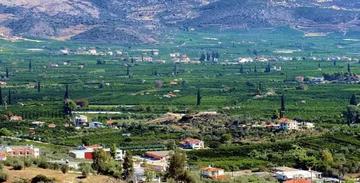AGRICURB Projects
Charred Grain Chemistry

Exposing plant matter to moderately high temperatures (230°C) for long periods of time (4-24 hours) results in chemical changes that make the remaining organic matter extremely resistant to degradation and microbial attack. This exposure to heat thus preserves the physical shape of the material so that archaeobotanists are able to identify the types of plants that were present at archaeological sites. Cereal grains and pulses are commonly preserved in this way.
Previous work (Fraser et al. 2013 and Styring et al., 2013) suggested that the bulk isotopic chemistry of cereal grains and pulses is minimally affected by charring.
This project combined multiple measurements of six different taxa – bread wheat, einkorn, emmer, hulled barley, lentil and pea – across a range of charring times and temperatures with microscope analysis of the physical changes that occur. This enabled us to obtain a precisely-measured charring offset to accurately reconstruct the original δ13C and δ15N ratios of the ancient crop remains.
This study is described in Nitsch et al. 2015.
Ancient crop growing conditions
The establishment of farming is a pivotal moment in human history, setting the stage for the development of class-based society and urbanization. Determining the nature of early farming and how farming practices evolved with increased societal complexity is therefore key to understanding the development of early urban civilizations.
Our research takes a new interdisciplinary approach, combining archaeobotany, plant stable isotope chemistry and functional plant ecology, to reconstruct not only what crops were grown, but also how farming was practiced.
Our recent paper (Bogaard et al. 2015) provides a worked example of combining plant stable isotope chemistry and functional plant ecology, to characterise a series of modern extensive (low input) and intensive (high input) farming regimes.
Plant stable isotope chemistry
Carbon and nitrogen stable isotope analysis of archaeobotanical crop remains can be used to infer agricultural intensity in two complementary ways. First, there is a clear impact of animal manure application on crop stable nitrogen isotope ratios; the volatization of the lighter 14N isotope in ammonia results in soil nitrates and plants enriched in the heavier 15N isotope. Secondly, carbon stable isotope analysis can be used to infer crop water status and hence potentially irrigation in arid climates.
These newly established ‘tools’ for inferring central aspects of agricultural practice can be combined to infer labour inputs through manuring and/or watering. These inferences are highly complementary. For example, manuring has a ‘slow-release’ effect on soils—only c. 5-25% of nitrogen being mobilized in the first year after application—and so provides an index of intensity as a long-term investment in land. Watering, by contrast, is required at regular intervals through the growing season in arid climates. Moreover, distinct regimes can be differentiated through variability in the intensity of inputs; thus, for example, hand-watering of pulses in a small-scale ‘garden’ setting is characterized by more variable watering levels and hence carbon isotope values than large-scale gravity-flow systems.
Functional plant ecology
Functional plant ecology infers the ecological potential of plant (here, weed) species on the basis of morphological and behavioural attributes that have an explicit functional significance. Thus, for example, weed species, which can develop large leafy canopies, are able to compete successfully for nutrients and light and so to dominate fertile situations. Measuring the canopy dimensions of established specimens of a species at a number of locations makes it possible to assess their maximum canopy size and hence this functional aspect of their competitive ability. Species adapted to conditions that are both fertile and highly disturbed, however, tend to have smaller canopies but a distinct ability to grow rapidly, a characteristic that is correlated with a set of leaf characteristics, such as the ratio of leaf area to dry weight (specific leaf area). Yet another set of functional attributes (e.g. small canopy size, low specific leaf area) characterize plants that are successful in nutrient-limited habitats. By measuring the functional attributes of weed species represented as seeds accompanying crops in archaeobotanical assemblages, it is possible to compare them with a series of modern analogue weed floras developed under known conditions to infer the nature of the farming regime.
Locating cultivation in the landscape

Identifying where crops were grown is crucial for understanding the ecological and social context of farming. Particularly when integrated with evidence for crop husbandry practices, such information can deliver crucial insights into, for example, land tenure and redistribution systems.
The archaeological contexts under investigation in this project range from the large-scale crop stores preserved in underground silos of the 16th century BC at the Hittite capital of Hattuša, central Anatolia, through to smaller scale storage rooms at Late Bronze Age Assiros Toumba, northern Greece. Insight into the source of stored surpluses can reveal how early urban centres were sustained, whether by small-scale surpluses from regional subsistence production or from extensive agricultural production close to the site.
The strontium isotope ratios (87/86Sr) of plants reflect the underlying geology of the soil. Strontium isotope analysis of archaeobotanical cereal grains and pulses therefore has the potential to identify (or rather, exclude) potential cultivation zones and to refine understanding of the organization of land use and production in contrasting social and ecological contexts.



